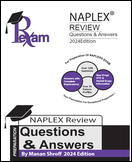
According to Oklahoma State Pharmacy Law, every registered pharmacist or assistant pharmacist shall, within ten (10) days after discontinuing or changing his or her place of practice, remove his or her certificate and notify the Executive Director of the Board of his or her new place of practice.
True or False
According to Oklahoma State Pharmacy Law, every registered pharmacist or assistant pharmacist shall, within ten (10) days after discontinuing or changing his or her place of practice, remove his or her certificate and notify the Executive Director of the Board of his or her new place of practice.
Answer: True, [Title 59 Oklahoma Pharmacy Act Chapter 8 Section 353.12(A)].
Every person upon receiving a certificate of licensure pursuant to the Oklahoma Pharmacy Act, or who has heretofore received a certificate of licensure in this state, shall keep such certificate conspicuously displayed in the pharmacy where such pharmacist is actively engaged in the practice of pharmacy or in such a location as is otherwise prescribed by the State Board of Pharmacy.
The current receipt for licensure shall be attached to the lower left corner of the original certificate.
According to Oklahoma State Pharmacy Law, every registered pharmacist or assistant pharmacist shall, within ten (10) days after discontinuing or changing his or her place of practice, remove his or her certificate and notify the Executive Director of the Board of his or her new place of practice.



